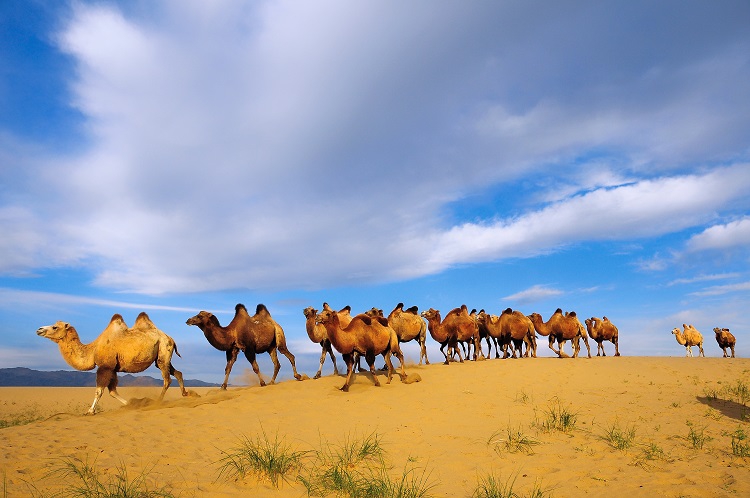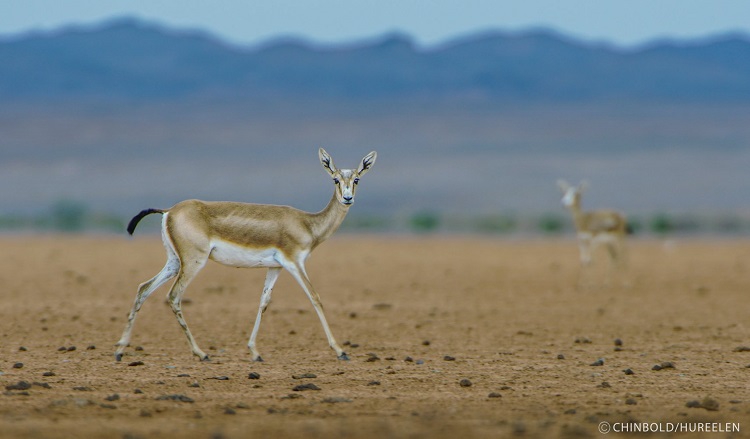
Posted by Selena Travel / 02 21, 2025
Southern Mongolia is widely known for its Gobi Desert, one of the world’s most unique ecosystems and best kept secrets. This unique ecosystem is renowned for its stunning natural formations, as well as real dinosaur fossils and endemic flora and fauna. No trip to Mongolia is complete without a visit to this incredible region. But what makes the Gobi Desert so special?
Check out our list of 20 interesting facts about the Gobi Desert to learn more. From its harsh climate to its surprising biodiversity, there's so much to discover in this remarkable landscape.
1. With an area of around 1,300,000 square kilometers, it's actually the 6th largest desert in the world, beating out other famous deserts like the Kalahari, Patagonia, and Sonoran deserts. In fact, it's even larger than some countries - the Gobi Desert is bigger than Thailand, Spain, and the UK combined!
Imagine the vastness of this incredible landscape and the adventures waiting to be had within it. From its unique natural formations to its fascinating biodiversity, the Gobi Desert is truly a wonder to behold.

2. Did you know that despite its massive size, the Gobi Desert only crosses two countries? This incredible landscape straddles the border between Southern Mongolia and Northern China, covering three provinces in each country. From the nomadic herders of Mongolia to the bustling cities of China, the Gobi Desert is truly a melting pot of diverse cultures and lifestyles.
3. Many cities along this historic trade route were actually located within the boundaries of the Gobi Desert. The Silk Road was a crucial lifeline for merchants and travelers, connecting the East to the West and facilitating the exchange of goods, ideas, and culture.
For the mighty Mongol Empire, trade was an integral part of their economy and they took great measures to protect the caravans of traders passing through their lands. In the 13th century, when the Mongol Empire was at its peak, they went to great lengths to ensure the safety of travelers on various routes heading westward.
4. There are fossil remains (including dinosaurs!) throughout the Gobi Desert some are as old as 100,000 years old. One of the first people to discover them for the Western world was the American paleontologist, Roy Chapman Andrews. His expedition discovered the first fossil dinosaur egg known to science in 1923 at the famous Flaming Cliffs in the Mongolian part of the Gobi Desert (read more about the Flaming Cliffs here). Roy Chapman Andrews also was allegedly the inspiration for Indiana Jones.

5. Contrary to what comes up to mind - arid landscape and extreme heat, the Gobi is actually classified as a Cold Winter Desert. It shares this designation with other famous deserts like Patagonia and the Great Basin Desert in America. During the winter, one can see frost and snow on the dunes and valleys, and at some locations, you can even find frost and ice in the summer months. One such example is the Ice Field at the Yol Valley, Lammergeier Gorge in English (named such due to the constant presence of this magnificent raptor) where you can see thick sheets of ice in mid-summer.
6. Despite not being the coldest or hottest desert in the world, the Gobi still manages to surprise visitors with its temperature extremes. During the winter months, temperatures can drop as low as -40°C, while in the summer, they can reach a scorching +45°C!
This dramatic variation in temperature has given rise to a unique set of challenges for those who call the Gobi their home. From coping with freezing winters to surviving the blistering heat of summer, the people and wildlife of the Gobi have developed remarkable adaptations to survive in this unforgiving environment.
But for travelers looking to explore the Gobi, the temperature extremes only add to the sense of adventure and excitement. So whether you're braving the cold winter nights or soaking up the sun in the height of summer, the Gobi is sure to leave a lasting impression on all who visit.
7. The Gobi Desert gets most of its meager rainfall in the summer. It gets less than 100 mm of rain every year. For comparison’s sake, Sydney, Australia gets around 883 mm of rain each year.

8. With such an inhospitable environment, you may think there are very few living things in the Gobi Desert. However, despite its harsh terrain and the climate, many call the Gobi home. Much like its cousin, the Sahara, camels are well suited to life here. There are many domesticated two-humped camels in the Gobi, but the wild Bactrian camel is a special case. They are a separate species from the domesticated camel, and just 1,000 are believed to be left in the wild. The camels are one of the few mammals that can actually eat snow for liquid in the winter, and they tolerate cold, drought, and high altitude well.
9. In addition to the critically endangered Wild Camel, the Gobi is also home to one of the most endangered mammals on earth, the Gobi bear Mazaalai. According to the latest estimation, there are about 50 Mazaalai bears are left in the wild.
10. Some animals don’t make the Gobi Desert their full-time home; many species migrate through the area. Black-tailed gazelles migrate through, and brown bears and wolves often visit. Elusive snow leopards even visit the area.
11. There are numerous folklore tales are told about the mysterious creatures of the Gobi Desert. Among them, lesser-known folklore to the outside world is about dragons. As the folklore goes, dragons are creatures of high power and hibernate during the winter in the water wells as they are creatures of water and sky. It is said that the wells which have dragons hibernating show clear signs and if one observes these signs, then the well should be left alone after having rituals done, such as covering it with white felt (made of sheep wool) to symbolize its holiness and purity.

Photo credit: Chinbold/Hureelen
12. Many people wonder whether the Gobi Desert’s legendary Mongolian Death Worm really existed at some point of time or it is all just a fantasy. Much like bigfoot, it’s a cryptozoological worm-like creature that purportedly lives in the Gobi Desert. The worm is supposed to be between 60 cm to 1.5 meters long, with a thick, red body. The worm is so poisonous that “to touch it means instant death.” It was the inspiration for the movie Tremors.
13. Most of the economic activities in the Mongolian section of the Gobi Desert come from mining projects and tourism as it attracts thousands of travelers each year.
14. Every year the Gobi Desert grows. It mostly moves to the south, in China. Each year there is an increase of around 3,600 km of desert in the country. This is mostly because of human activity, like herding animals there, and the removal of trees. The Chinese government is taking measures to stop desertification by planting drought-hardy trees in the region.
15. The Gobi Desert can be divided into five ecological regions. The farthest north one has low-lying areas and small ponds. The other regions range from near steppe, with rolling hills and sporadic vegetation – desert, mountain, steppe

16. Despite being the largest desert in the largest continent in the world, European explorers didn’t mention the Gobi until 1688. A French missionary named Jean-Francois Gerbillon, working in China mentioned the land expanse on journeys to Mongolia and Manchuria. Przhevalsky, the man who introduced the Takhi horse, the last remaining wild horse on earth, to European science, also mentioned about the Gobi in his works.
17. The Gobi’s sand spreads out all over Asia. The sand storms spread the sands of the Gobi in an event that’s called the Asian Dust storms. The sand storms are especially bad during spring. The fine dust spreads all over cities in China, Korea and Japan. This is especially dangerous for those who suffer from lung diseases.

18. The Gobi Desert, despite being so dry in most of the areas, has many plants that are well suited for drought. The most common Gobi Desert plants are shrubs that can handle the heat and grow on little moisture. Gray Sparrow’s Saltwort, Gray Sagebrush and needle grass, and bridle-grass are common throughout the area. These grasses grow in small clumps and are also called feather grasses. Unfortunately, the shrub population has decreased due to an increase in domesticated animal grazing.
19. While it may not be on every Gobi Desert map, parts of the Great Wall go through the Gobi Desert. Originally built to keep out nomadic raids, the Great Wall has become a symbol of China.
20. Khongor sand dunes, known as the Singing Dunes, are located in the Gobi Desert. Under certain weather conditions, the 185-km long sand dunes produce a “booming” or "humming" sound hence the name Singing Dunes. Scientists aren’t exactly sure, but the sound comes from how the grains move over one another.
Embark on a thrilling adventure to the Gobi Desert and follow in the footsteps of the legendary explorer Roy Chapman Andrews. Marvel at the stunning sunsets over the famous Flaming Cliffs and listen to the mystical whispers of the Khongor sand dunes. Don't miss out on this once-in-a-lifetime experience and explore our incredible group and private tours to the Gobi Desert now!